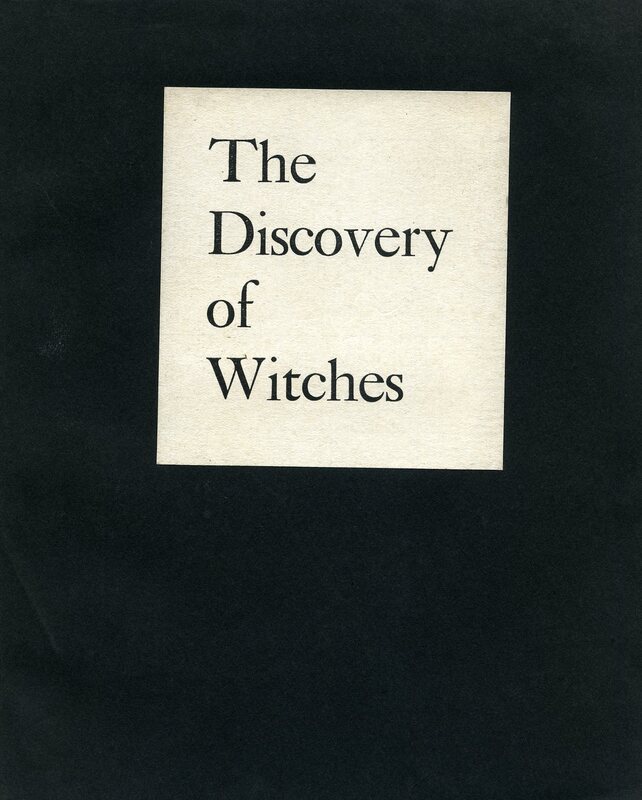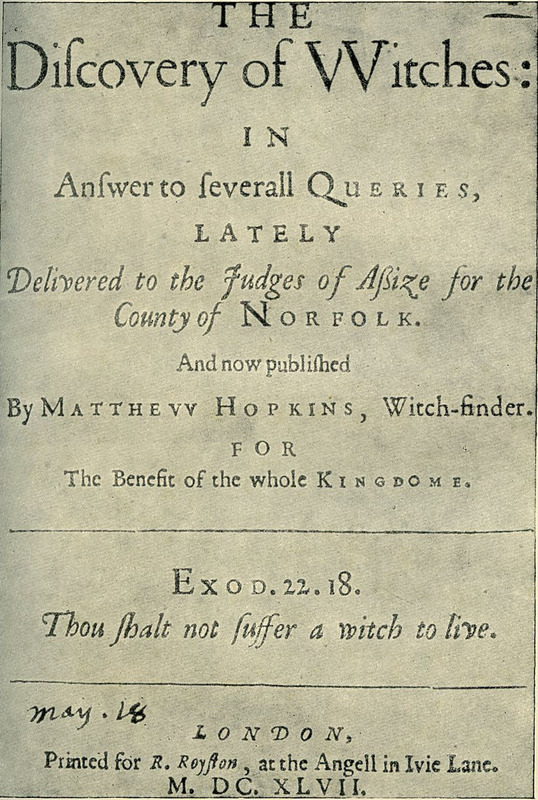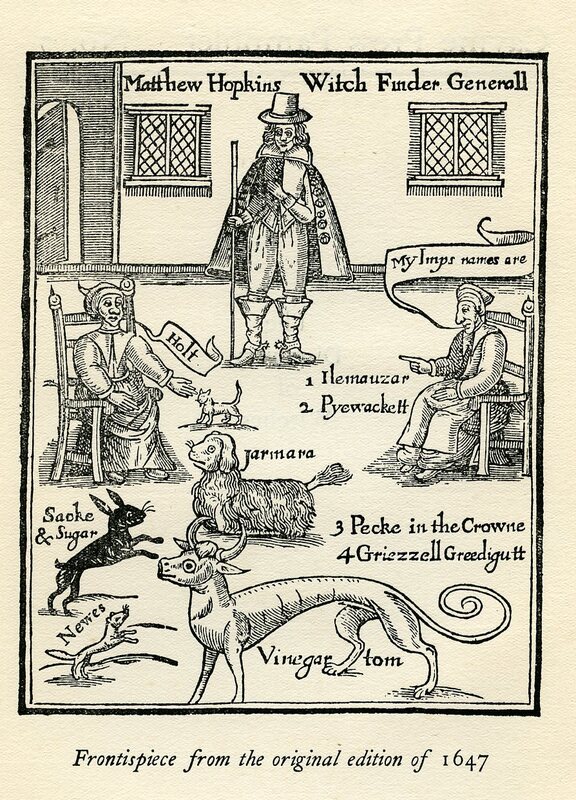In 1563, Witchcraft was deemed a capital offence in Britain. Between 1645-1646 East Anglia became increasingly concerned about witches. Matthew Hopkins known as the Witchfinder General did his part in putting “witches” to death during this time.1
In 1647, Hopkins published his book The Discovery of Witches. In it, he answers questions posed to him about his way of finding witches. These include:
“Many poore People are condemned for having a Pap, or Teat about them, whereas many People (especially antient People) are, and have been a long time troubled with naturall wretts on severall parts of their bodies and other naturall excressencies, as Hemerodes, Piles, Childbearing, &c. and these shall be judged only by one man alone and a woman, and so accused or acquitted.”
“How can it possibly be that the Devill bring a spirit, and wants no nutriment or sustentation, should desire to suck any blood? and indeed as he is a spirit he cannot draw any such excressences, having neither flesh nor bone, nor can be felt, &c.”
“When these Paps are fully discovered, yet that will not serve sufficiently to convict them, but they must be tortured and kept from sleep two or three nights, to distract them, and make them say any thing; which is a way to tame a wilde Colt, or Hawke, &c.”
During his time as a witch hunter, Hopkins and his associates are thought to be responsible for the deaths of 300 women. The means of identification usually involved some form of torture, such as sleep deprivation to coerce a confession, cutting the accused arm with a knife, needle or pin to see if they bled, and the classic “swimming test” where the accused were bound by the arms and legs and thrown into a pond (if they drowned they were not a witch.) Hopkins was paid by the towns where his “services” were provided and is estimated to have collected £1000. 2




